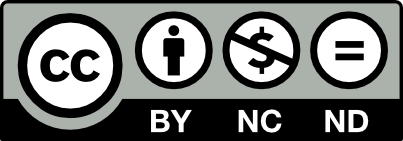This page is licensed under Creative Commons under Attribution 4.0 International. Anyone can share content from this page, with attribution and link to College MatchPoint requested.
Early Application Surge: What the Initial Fall 2026 Admissions Trends Reveal
For the Fall 2026 admissions cycle, highly selective colleges and universities across the country are experiencing a surge in early applications once again. After a few years of post-pandemic fluctuation, this year’s data show a clear trend: students are applying earlier, in greater numbers, and with increasingly strategic intent.
Schools reporting significant increases include Boston College (up 15%), Duke University (up 8%), Emory University (up 21%), Northwestern University (up 15%), New York University (up 10%), the University of Georgia (up 14% in Early Action), the University of Pennsylvania (up about 12%), and the University of Virginia (up 11% in Early Decision). The upward movement at these institutions continues a broader pattern of front-loaded admissions cycles, where students aim to maximize every possible edge.
The Rise of Early Applications
Early Decision and Early Action programs are no longer niche strategies. They have become the main stage for competitive college admissions. Many selective colleges now fill 40 to 60 percent of their freshman class during the early round, leaving fewer spaces available for the much larger Regular Decision pool. For students with strong academic profiles, clear first-choice schools, and well-developed applications, applying early can provide a meaningful advantage.
That advantage, however, comes with a trade-off. Early Decision is binding, which means that a student admitted under this plan commits to attend, regardless of other offers or financial aid outcomes. This makes early strategy most effective for families who have already done their research, understand the financial commitment, and have identified a true best-fit school.
The Test-Optional Effect
One of the defining dynamics of this cycle is the continued influence of test-optional policies. Most of the colleges that reported increases in early applications still allow students to apply without submitting SAT or ACT scores. These policies have broadened access and encouraged more students to aim high, particularly those who might have felt uncertain about how their scores compared.
Interestingly, institutions that reinstated testing requirements saw the opposite effect. Brown University and Yale University, which now require test scores, experienced declines in early application volume compared to last year. This pattern suggests that, for many students, test-optional policies remain a powerful motivator to apply early and ambitiously.
Families should interpret this trend with nuance. While test-optional policies can open doors, selective colleges often see higher rates of admission among students who do submit strong scores. In short, “optional” does not always mean “irrelevant.” For students applying to test-optional schools, thoughtful strategy still matters—especially in choosing whether to send scores or rely on other parts of the application to tell their story.
The Southern Surge
Another notable development this year is the growing competitiveness of southern universities. Institutions such as Duke, Emory, the University of Virginia, and the University of Georgia have all reported significant increases in early applications.
Part of this rise reflects demographic and cultural shifts. Many families are drawn to southern campuses for their blend of academic rigor, school spirit, and vibrant campus life. The region’s relative affordability compared to the Northeast and West Coast also plays a role, especially as families weigh long-term financial considerations.
For students, this means that the admissions landscape in the South is increasingly resembling that of the Ivy League and other elite private institutions. The traditional “safety” schools in these regions may now be highly competitive, particularly for out-of-state applicants.
What It Means for Students and Families
The early application surge tells a larger story about how students are navigating uncertainty. In a competitive and unpredictable process, applying early can feel like taking back a measure of control. Students know that applying in November often improves their odds, and colleges benefit by securing committed students early. It is a system that rewards preparation, decisiveness, and clear priorities.
Yet the increase in early applications also amplifies the importance of fit. With more students competing for fewer early spots, the differentiators are shifting. Authentic essays, well-aligned activities, and a coherent academic narrative matter more than ever. Colleges are not just admitting strong students—they are admitting communities. They want to see how each applicant will contribute to their campus environment, both academically and personally.
Key Takeaways for Applicants
- Start early and plan strategically. Students aiming for highly selective colleges need to have their testing, essays, and activities aligned well before the start of senior year. A clear plan allows for stronger applications and reduces stress.
- Research financial aid implications. Early Decision can be beneficial, but it is important to understand what binding means. Families should use net price calculators, review financial aid policies, and discuss affordability in advance.
- Use test-optional policies wisely. If your test scores reflect your academic strength, submitting them can add value. If they do not, focus on other parts of the application that tell your story well.
- Do not overlook Regular Decision. While the early round continues to expand, many schools still admit a significant number of students in Regular Decision. Students should build balanced college lists that include strong options across both timelines.
- Focus on fit, not just prestige. The most successful applicants are those who understand who they are and what they want from college. A well-aligned match can make all the difference in both admission results and long-term success.


